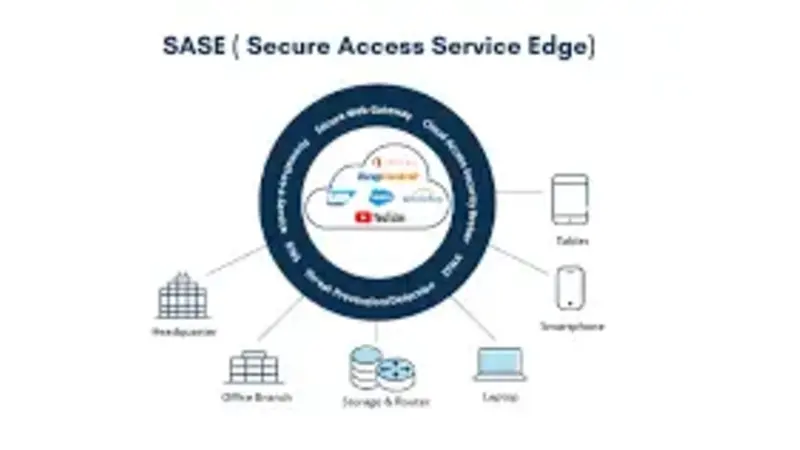Table of Contents
- What is SASE Solutions Explained and Why Does It Matter?
- Core Components of SASE
- How SASE Addresses Modern Security Challenges
- Seamless Connectivity: The Networking Side of SASE
- Real-World Applications of SASE
- Implementing SASE: Steps and Best Practices
- The Future of SASE in Networking and Security
Key Takeaways
As technology advances, the need for secure yet efficient connectivity becomes paramount. Understanding SASE offers a pathway to addressing contemporary networking and security challenges, ensuring comprehensive protection and connectivity for businesses.
What is SASE and Why Does It Matter?
SASE, or Secure Access Service Edge, represents a groundbreaking shift in how organizations approach network security. By seamlessly integrating security and networking features into one cloud-based framework, SASE provides a unified solution that meets the demands of contemporary businesses dependent on remote access and cloud solutions. As organizations move towards digital transformation, understanding how SASE solutions can streamline operations becomes crucial. In an era where data breaches and security threats abound, SASE provides the tools for safeguarding digital assets while optimizing network performance, illustrating its significance in today’s technology-driven environment.
Core Components of SASE
SASE solutions explained core components are central to SASE’s effectiveness, each providing a distinct layer of security and access control. The Secure Web Gateway (SWG) is at the forefront, which acts as a shield against web-based threats by enforcing security measures at the network perimeter. This capability is crucial for preventing harmful data from infiltrating the system. Accompanying the SWG is the Cloud Access Security Broker (CASB), which plays a vital role in securing interactions between cloud service users and providers. CASBs are especially critical in detecting suspicious activity and ensuring data is protected and compliant with relevant regulations.
Zero Trust Network Access (ZTNA) is another pillar, advocating for a “never trust, always verify” model that authenticates every user and device before granting access to network resources. This method dramatically lowers the chances of unauthorized entry. Finally, firewall-as-a-service (FWaaS) offers a versatile, cloud-based option for overseeing and regulating incoming and outgoing network traffic, guaranteeing that only secure data is permitted. Collectively, these elements create a robust defense system designed for intricate, dispersed networking settings.
How SASE Addresses Modern Security Challenges
Today’s rapidly evolving cyber threat landscape presents numerous challenges for enterprises. Traditional security frameworks often must adapt more quickly to counter these threats effectively. SASE steps into this gap by offering a versatile, scalable solution that merges network security with wide-area networking, maximizing security coverage across diverse environments. By situating crucial security functionalities in the cloud, SASE offers real-time protection against sophisticated attacks such as advanced persistent threats, ransomware, and phishing scams. This proactive defense posture allows organizations to remain resilient, safeguarding sensitive data and systems from unauthorized access and malicious activity.
Seamless Connectivity: The Networking Side of SASE
While the emphasis on security is crucial, SASE’s remarkable network performance capabilities deserve equal recognition. By providing a seamless networking experience, SASE guarantees that users can swiftly and dependably access vital cloud applications and services. Historically, integrating security measures often came at the expense of network speed and performance. However, SASE eliminates these trade-offs by integrating security at the edge, reducing latency, and optimizing bandwidth usage. This approach simplifies network management and enhances the user experience, ensuring uninterrupted access to resources and fostering a culture of productivity and efficiency.
Real-World Applications of SASE
The practical applications of SASE span multiple industries, testifying to its versatility and effectiveness. For example, in the financial sector, institutions have embraced SASE solutions explained to secure sensitive transactions and protect client data from cybercriminals. Meanwhile, in the educational domain, universities and schools rely on SASE to safeguard personal information and intellectual property against unauthorized access and cyber threats. These real-world examples highlight how diverse organizations leverage SASE’s unified approach to meet their unique security and networking needs, showcasing its transformative impact across industries.
Implementing SASE: Steps and Best Practices
Embracing SASE requires a systematic and strategic approach to ensure successful implementation and operation. Organizations begin by comprehensively assessing their current infrastructure to identify security weaknesses and networking inefficiencies. This baseline evaluation informs the selection of a SASE provider to partner with a vendor possessing relevant expertise and capabilities. Gradual integration of SASE components follows, initially focusing on priority areas to minimize disruption and optimize outcomes. Regular monitoring and adjustment of security policies become imperative, allowing organizations to remain agile and adapt to changing threats and requirements. Through these best practices, guided by industry experts, businesses can harness the full potential of SASE and achieve their security and network performance objectives.
The Future of SASE in Networking and Security
With the acceleration of digital transformation, Secure Access Service Edge’s (SASE) influence on networking and security is set to increase significantly. This innovative framework features a comprehensive and scalable architecture designed to meet today’s enterprises’ complex and evolving demands. Seamlessly combining security and networking components, SASE empowers organizations to effectively manage and safeguard their increasingly digital environments.
In an era of rising cyber threats and businesses operating across various platforms and locations, SASE stands out as a critical enabler for future-ready operations. It facilitates enhanced security measures, ensuring that sensitive data remains protected while maintaining fluid, uninterrupted user connectivity. This leads to improved operational efficiency and simplifies the overall IT infrastructure, resulting in reduced complexity and lower costs. As organizations look to secure their digital futures, SASE emerges as a vital ally, providing the tools necessary to thrive in a rapidly shifting technological world.
